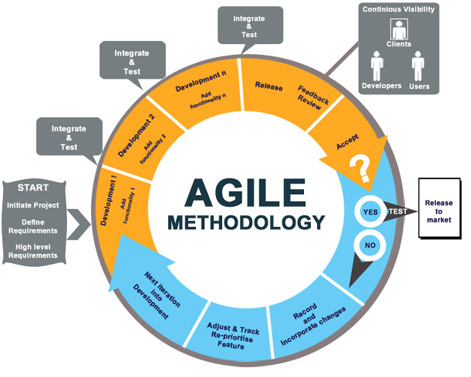CSC/ECE 517 Fall 2011/ch5 6d ny: Difference between revisions
| Line 6: | Line 6: | ||
Agile- denoting “the quality of being agile; readiness for motion; nimbleness, activity, dexterity in motion ” is a group of software development methodologies based on iterative and incremental development, where requirements and solutions evolve through collaboration between self-organizing, cross-functional teams. | Agile- denoting “the quality of being agile; readiness for motion; nimbleness, activity, dexterity in motion ” is a group of software development methodologies based on iterative and incremental development, where requirements and solutions evolve through collaboration between self-organizing, cross-functional teams. | ||
The term | |||
The term “[http://en.wikipedia.org/wiki/Agile_software_development Agile Software Development]” was introduced in 2001 by Agile [http://agilemanifesto.org/ Software Development Manifesto] published by a group of software practitioners and consultants. The important aspects of this Manifesto are, | |||
*Individuals and interactions over processes and tools. | *Individuals and interactions over processes and tools. | ||
*Working software over comprehensive documentation. | *Working software over comprehensive documentation. | ||
Revision as of 16:52, 10 November 2011
Agile Landscape
Introduction
Agile- denoting “the quality of being agile; readiness for motion; nimbleness, activity, dexterity in motion ” is a group of software development methodologies based on iterative and incremental development, where requirements and solutions evolve through collaboration between self-organizing, cross-functional teams.
The term “Agile Software Development” was introduced in 2001 by Agile Software Development Manifesto published by a group of software practitioners and consultants. The important aspects of this Manifesto are,
- Individuals and interactions over processes and tools.
- Working software over comprehensive documentation.
- Customer collaborations over contract negotiation.
- Responding to change over following plan.
Flowchart

Agile Software development processes are based on iterative and incremental development, where requirements and solutions evolve through collaboration between self-organizing, cross-functional teams.Agile processes use feedback, rather than planning, as their primary control mechanism. The feedback is driven by regular tests and releases of the evolving software.